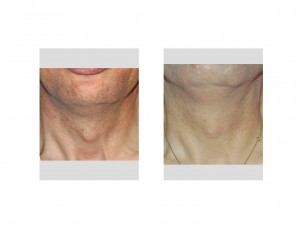
ALTERNATIVES
There are no alternatives to reducing a prominent thyroid cartilage (adam’s apple) other than open surgical reduction.
GOALS
The goal of a tracheal shave is to reduce the prominence of the neck bulge over the thyroid cartilage.
LIMITATIONS
The limitations of a tracheal are in how much reduction can be achieved. How much reduction of the neck bulge that will result depends on the thickness of the cartilage and the overlying soft tissues.
EXPECTED OUTCOME
Expected recipient site outcomes include the following: temporary swelling and bruising of the neck area, mild temporary soreness and neck tightness, a small permanent heck scar and up to 3 months for all swelling to go down to see the final result.
RISKS
Significant complications from tracheal shaves are very rare. More likely risks include infection, undercorrection with some residual neck bulging and adverse neck scarring. Permanent voice changes have been reported in the medical literature by not seen by Dr. Eppley. Any of these risks may require revisional surgery for improvement.
ADDITIONAL SURGERY
Should additional surgery be required for tracheal cartilage or scar revision, this will generate additional costs.


